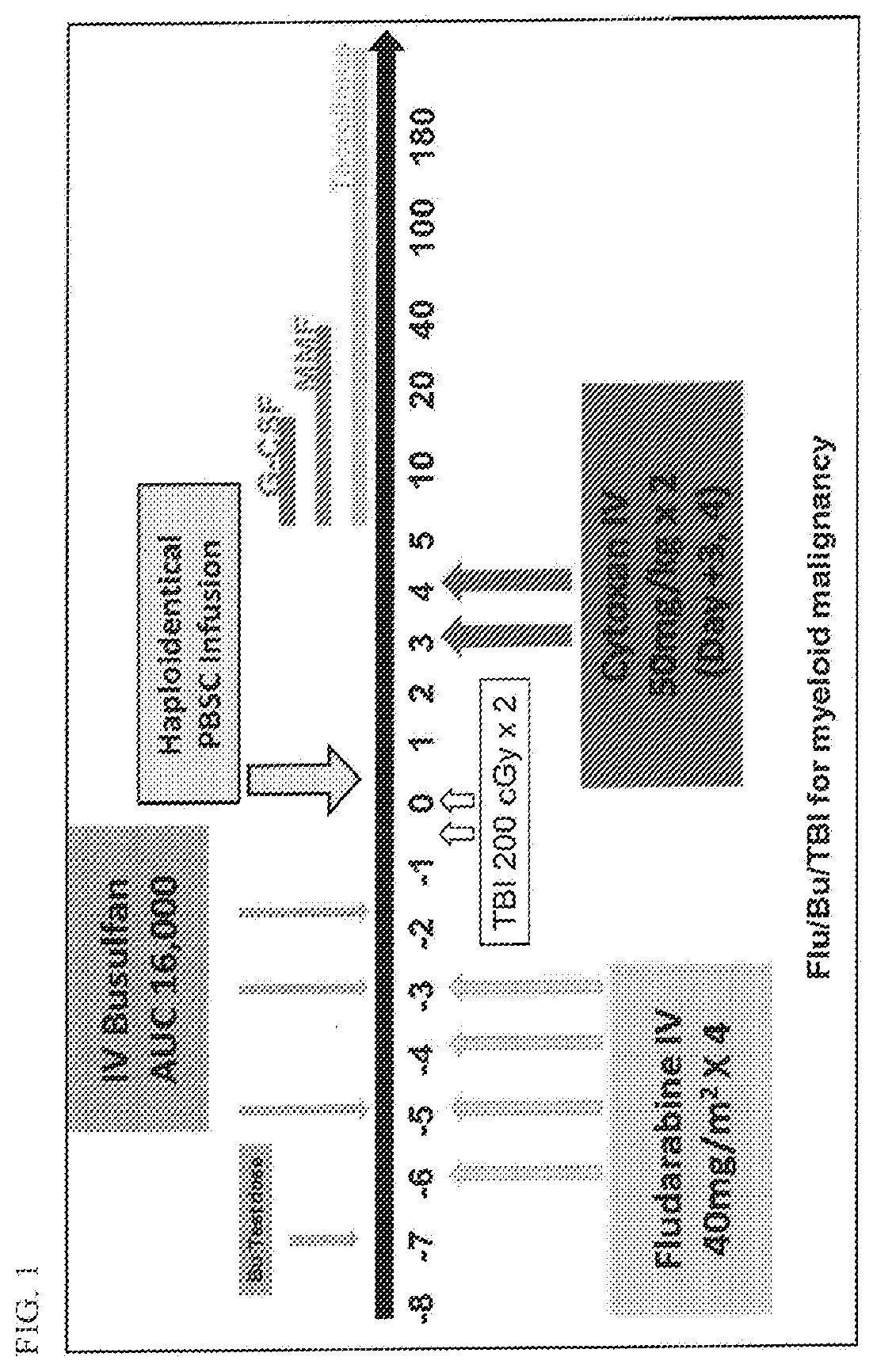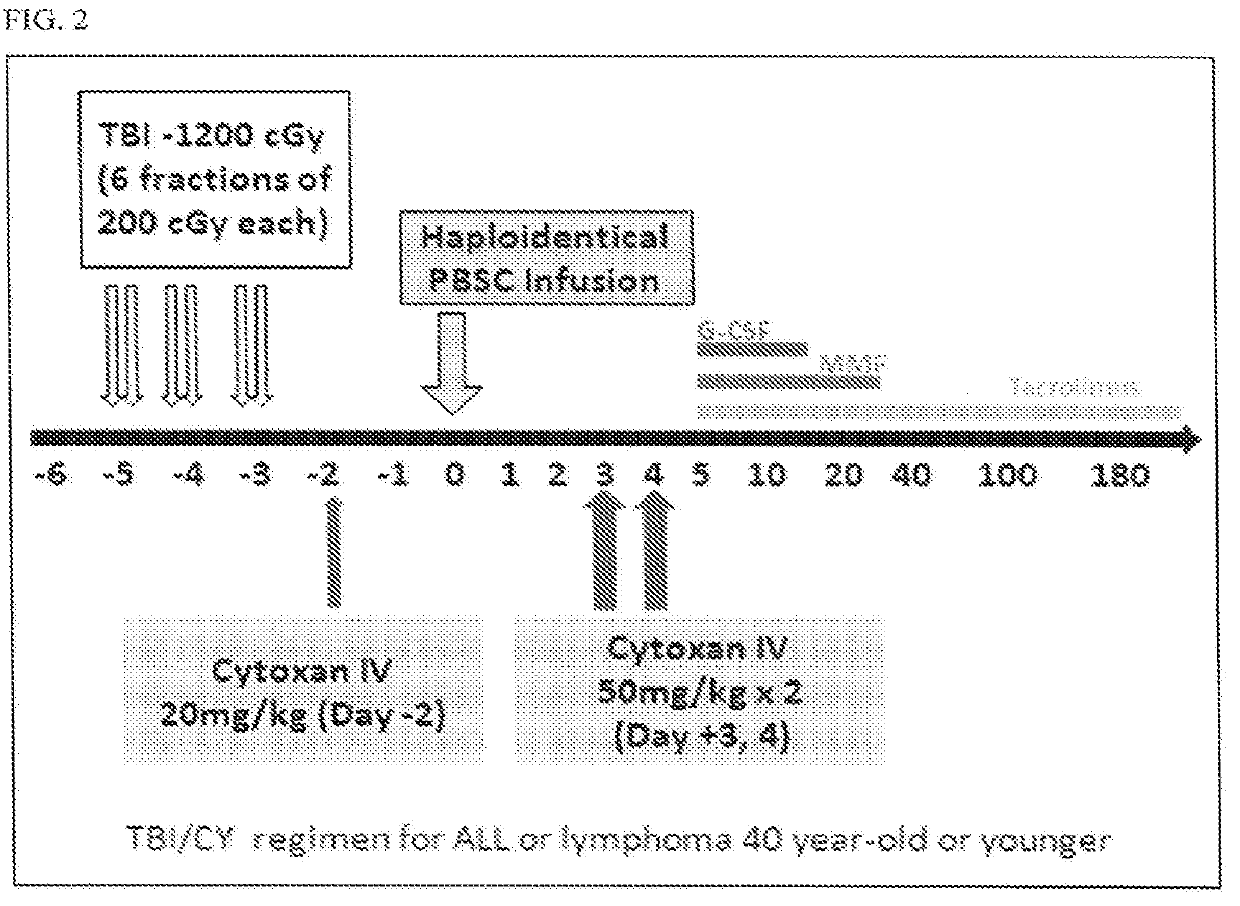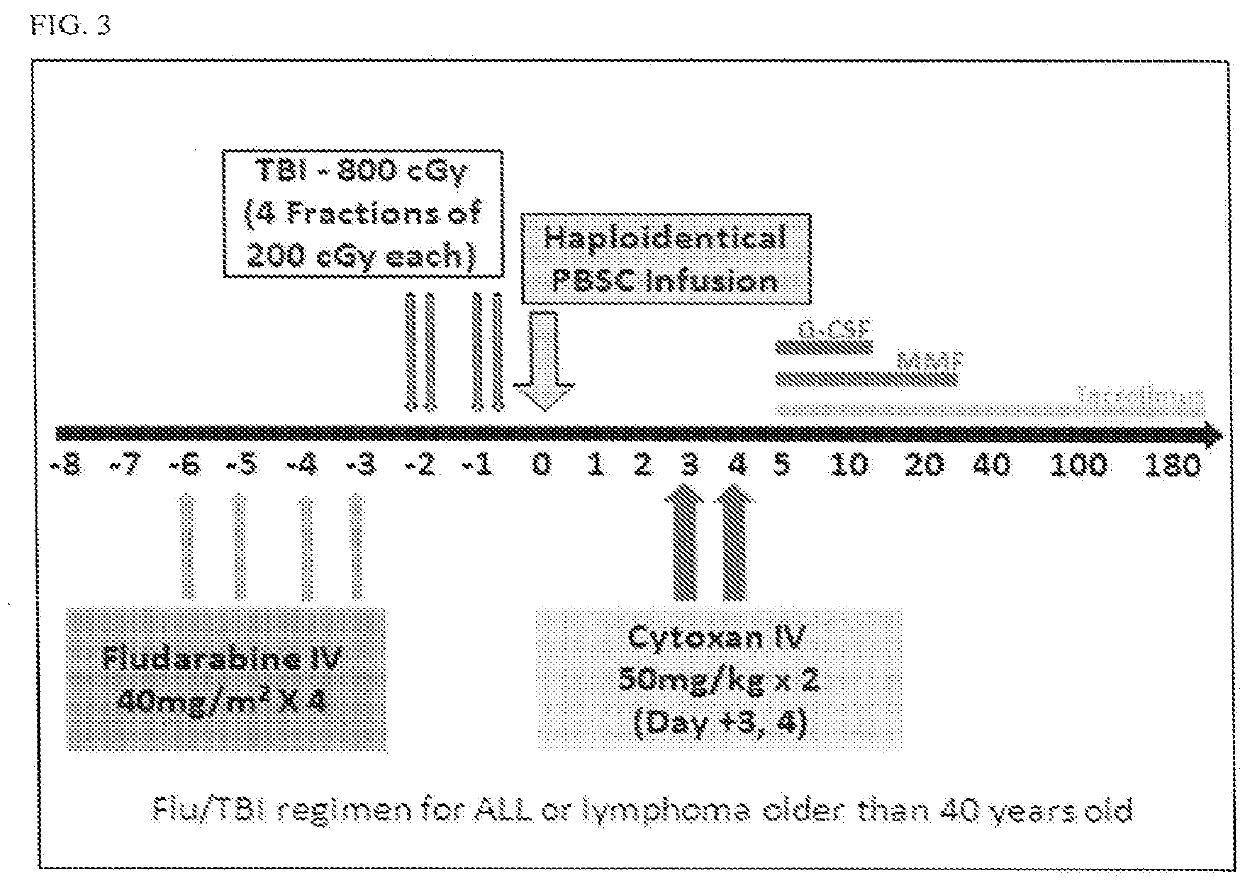Methods for stem cell transplantation
a stem cell and transplantation method technology, applied in the field of stem cell transplantation, can solve the problems of high multiple complications, and inability to successfully carry out hsct, and achieve the effect of reducing the risk of graft rejection, and avoiding graft rejection
- Summary
- Abstract
- Description
- Claims
- Application Information
AI Technical Summary
Benefits of technology
Problems solved by technology
Method used
Image
Examples
examples
Example 1-αδ T Cell Depletion
[0060]Methods for αβ T cell depletion are known in the art and any method known in the art may be used. In one embodiment, the following method of αβ T cell depletion is used. The CLINIMACS® device with the α / β TCR Reagent Kit and other associated reagents is used for αβ T cell depletion. CLINIMACS®α / β TCR Reagent is a sterile monoclonal antibody reagent specific for αβ cells. The depletion of the αβ T-cells will be performed according to the manufacturer's instructions and as previously described (16). In brief, the leukapheresis / ex-vivo expanded product are incubated with the appropriate antibodies that are conjugated to magnetic particles and then are processed using the CLINIMACS® device (Miltenyi Biotec). CLINIMACS® plus Instrument is a software-controlled instrument that processes the blood sample (cell product). The CLINIMACS® Tubing Set is a single-use, sterile, disposable tubing set with proprietary cell selection columns. The CLINIMACS® PBS / EDT...
example 2
δ T Cell Expansion
[0061]Methods for γδ T cell expansion are known in the art and any method known in the art may be used. In one embodiment, peripheral blood mononuclear cells (PBMC) are obtained via a peripheral blood draw or leukapheresis. The PBMC product is placed into culture at a density of 1-2×106 / mL with addition of 2 mM ZOMETA® (Novartis, Inc.; zoledronic acid) and 100 u / mL Interleuken-2 (IL-2 Miltenyi Biotec, Bergish Gladbach, GERMANY) and appropriate GMP-grade base media culture or bioreactor system that allows monocytes to adhere (e.g. tissue culture plastic or the PRODIGY® bioreactor system (Miltenyi Biotech). Following 14 days of culture the cells are harvested and depleted of αβ T cells.
[0062]Preferably, the following method of αβ T cell depletion is used. The PRODIGY® OR CLINIMACS® device with the α / β TCR Reagent Kit and other associated reagents is used for αβ T cell depletion. CLINIMACS®α / β TCR Reagent is a sterile monoclonal antibody reagent specific for αβ cells....
example 3
Study
[0063]To be enrolled in the study, patients must fulfill all eligibility criteria and not be excluded by an exclusion criteria.
Eligibility Criteria
[0064]Eligibility criteria for the study are as follows:[0065](i) Patients with neoplastic hematological disorders with indication of allogeneic transplant according to the National Comprehensive Cancer Network (NCCN) or other standard guidelines as follows; (a) Acute lymphoblastic leukemia [ALL]25 with high-risk features or relapsed disease; (b) Hodgkin26 or Non-Hodgkin lymphoma27 [HL or NHL]: relapsed disease where remission duration is less than 1 year, relapse after previous autologous transplant, or failure to achieve CR with chemotherapy; and (c) Myeloid malignancy (acute myeloid leukemia [AML]28 with intermediate / high-risk features (per NCCN criteria) or relapsed disease, OR chronic myeloid leukemia [CML]29 in hematological remission or chronic phase)28;[0066](ii) myeloid disorder (myelodysplastic syndrome [MDS]30 with interme...
PUM
| Property | Measurement | Unit |
|---|---|---|
| concentration | aaaaa | aaaaa |
| concentration | aaaaa | aaaaa |
| pH | aaaaa | aaaaa |
Abstract
Description
Claims
Application Information
 Login to View More
Login to View More - R&D
- Intellectual Property
- Life Sciences
- Materials
- Tech Scout
- Unparalleled Data Quality
- Higher Quality Content
- 60% Fewer Hallucinations
Browse by: Latest US Patents, China's latest patents, Technical Efficacy Thesaurus, Application Domain, Technology Topic, Popular Technical Reports.
© 2025 PatSnap. All rights reserved.Legal|Privacy policy|Modern Slavery Act Transparency Statement|Sitemap|About US| Contact US: help@patsnap.com



